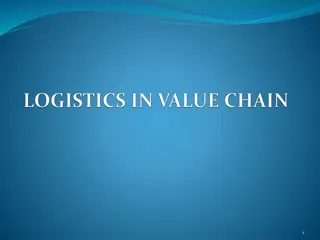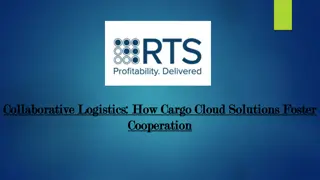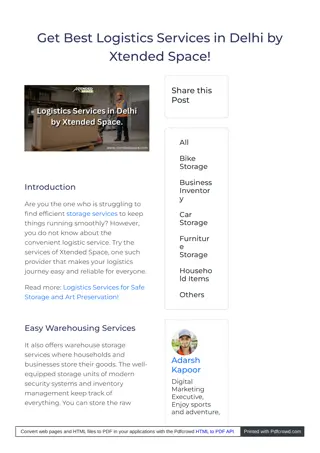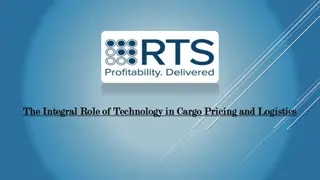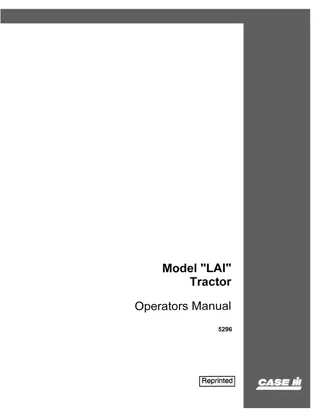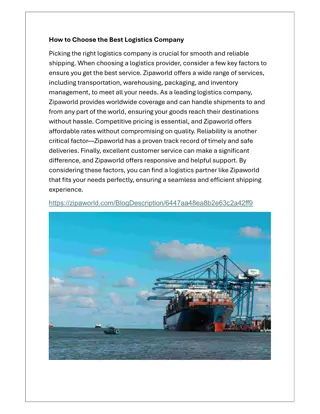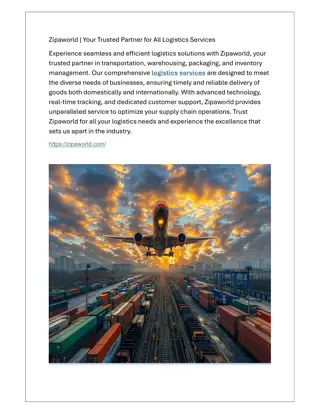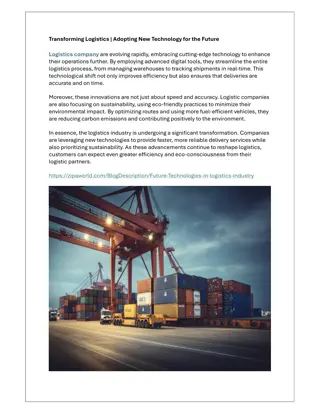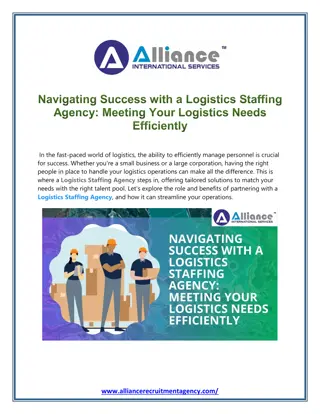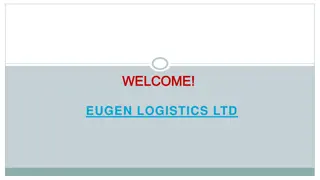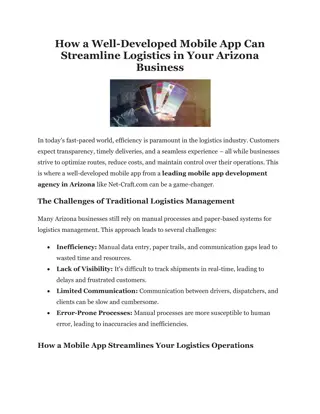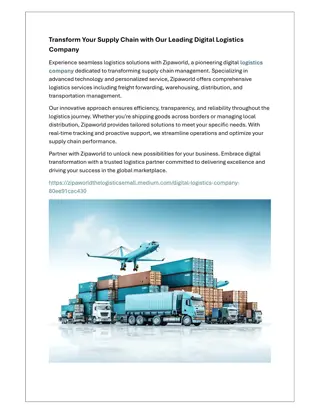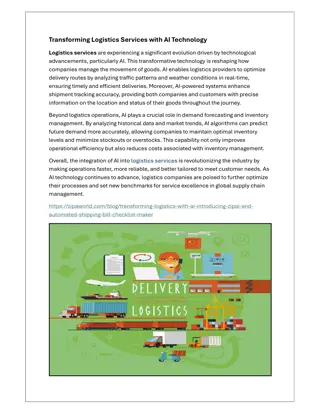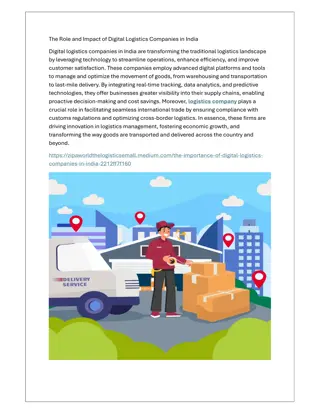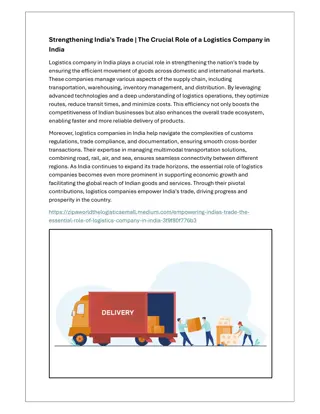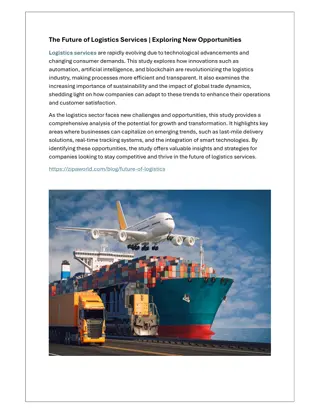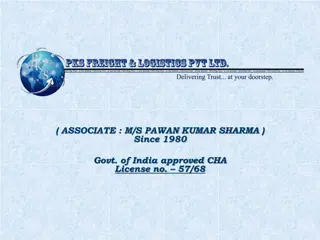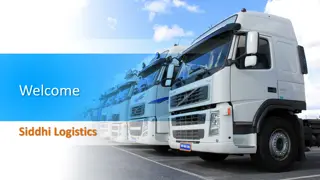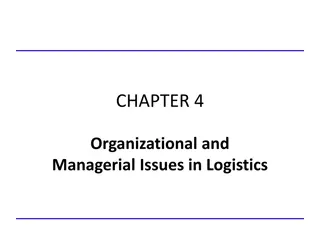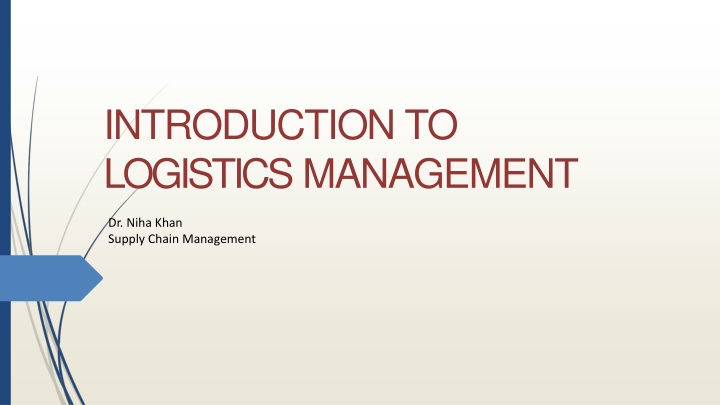
Efficient Logistics Management: Overview & Objectives
Discover the significance of logistics management in ensuring organizational success by efficiently managing the flow of goods, resources, and information. Learn about the components, objectives, and major functions of logistics management to enhance supply chain efficiency.
Download Presentation

Please find below an Image/Link to download the presentation.
The content on the website is provided AS IS for your information and personal use only. It may not be sold, licensed, or shared on other websites without obtaining consent from the author. If you encounter any issues during the download, it is possible that the publisher has removed the file from their server.
You are allowed to download the files provided on this website for personal or commercial use, subject to the condition that they are used lawfully. All files are the property of their respective owners.
The content on the website is provided AS IS for your information and personal use only. It may not be sold, licensed, or shared on other websites without obtaining consent from the author.
E N D
Presentation Transcript
INTRODUCTION TO LOGISTICS MANAGEMENT Dr. Niha Khan Supply Chain Management
INTRODUCTION Efficient logistics is a key factor in ensuring the success of an organization from ensuring that the organization has all that it requires to produce results to ensuring that customers are satisfied. The following presentation has been prepared to give the reader an overview of logistics management from the very meaning of logistics to the phases in logistics management.
What isLogistics? This is the management of the flow of goods, resources and information between the point of origin and the destination (point of consumption). Logistics is the process of planning and implementing the efficient transportation and storage of goods from one point toanother . It ensures that all materials and personnel are available on time and in the right place to ensure that a business objective is accomplished. Logistics thus implies having the right type of product or service at the right place, at the right time, for a right price and in the right condition. Logistics can be looked at as a subset of supply chain management which ties into project management by ensuring timely completion of a project
The aim of Logistics Management is to ensure supply to the customerthe: Right product Right cost Right quantity Right quality Right place Right time
Components (activities) of Logistics 1.Transportation 2.Supply. 3.Inventory planning and management. 4.Warehousing. 5.Packaging. 6.Order processing
Objectives of Logistics Management 1.T o choose the most effective transportation routes 2. T o identify the best delivery method 3. T o seek continuous quality improvement 4. T o minimize the cost of transportation 5. T o facilitate quick response to customer requirements 6. T o improve customer service 7. T o minimize damage to goods
Major Functions ofLogistics The major functions in logistics are: Transportation. Warehousing. Material handling Inventory Management Transportation management focuses on planning, optimizing and executing the use of vehicles to move goods from one place toanother . Warehouse management includes functions like inventory planning and management and order fulfillment.
1. Transportation Management Transportation management involves the movement of people, materials and equipment from one place to another. It involves: Route planning Freight payment Route optimization Operations execution Transportation order planning Communication Cost optimization Resource optimization Organization of quotes Consolidating requests Improving accountability Improving delivery capabilities
2. Warehouse Management Warehouse management involves the control and administration of warehouse operations where equipment, vehicles and goods are kept. Warehouse management: Improves flexibility and responsiveness. Eases activities like orders and shipments Secures the expensive equipment Labor management Ensures that equipment are kept in check
3. Inventory Management This is the process of ordering, storing and using the inventory of theorganization with regard to the type and amount of material ina storage facility. 4. Material Handling This deals with the loading, offloading and the movement of materials at the point of origin, in transit and at the point ofconsumption.
Phases of Logistics Management Inbound Logistics This is the movement of materials from the point of origin to the point of production. Outbound logistics This is the movement of finished goods from the point of production to the point of consumption. Reverse Logistics This is the movement of damaged goods from customers back to the point of production
The Logistician This is an expert in logistics. The logistician coordinated the organization s supply chain. Roles of a logistician. 1.Find the cheapest and fastest way to transport goods 2.Make suggestions to customers regarding improvements 3.Keep informed on the latest advancements in logistics technology 4.Strive to determine what customers needs are and ensure that they must meet them 5.Assess logistics functions and work to improve them



